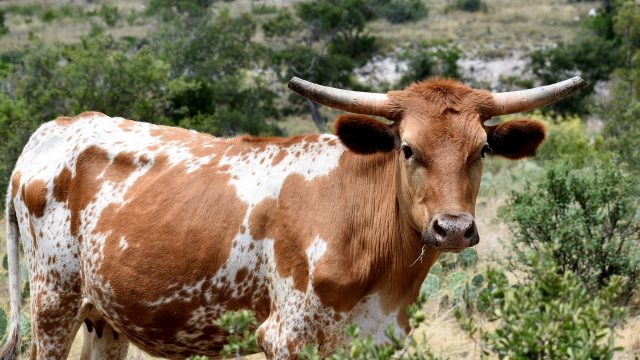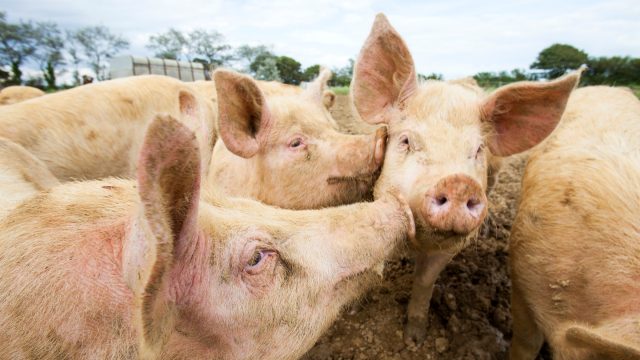Legally Brief: California Air Resources Board Commits to Regulate Methane Emissions by Dairy Industry
By Stephen Wells, Animal Legal Defense Fund Executive Director
In a momentous and long overdue shift in policy, partly in response to the Animal Legal Defense Fund’s advocacy, the California Air Resources Board (ARB) has formally committed to regulating the dairy industry’s greenhouse gas emissions. California’s human and wildlife residents will breathe a little easier now that the ARB will adopt regulations on dairy manure management with implementation scheduled for roughly 2024. The purpose of these regulations is to reduce methane emissions that primarily come from animal agriculture in California. This is believed to be the first time that a governmental body (state or otherwise) will regulate greenhouse gas emissions from animal agriculture, positioning California to become a leader in combatting climate change.
ARB is the department within California’s Environmental Protection Agency charged with improving air quality for Californians. The California Global Warming Solutions Act of 2006 requires the state to reduce greenhouse gas emissions to 1990 levels by 2020, and the California legislature recently extended the law to reduce emissions to 40% below 1990 levels by 2030. ARB is a key player in achieving these goals. In the fall of 2014, the Animal Legal Defense Fund submitted a petition for rulemaking urging ARB to regulate greenhouse gas emissions from factory farming under the state cap-and-trade program. It was a modest request considering factory farming’s impact on climate change and that ARB already regulates greenhouse gas emissions in the transportation and energy sectors.
Two and a half years later, ARB granted part of the petition due to its commitment to reducing methane emissions from the dairy industry, one component of its Short-Lived Climate Pollutant Reduction Strategy. In its 2014 report, “Reducing Short-Lived Climate Pollutants in California,” ARB recognized that the livestock industry is responsible for 59% of all methane emissions in the state. Methane is a short-lived climate pollutant compared to carbon dioxide, meaning it does not persist in the atmosphere as long, but it is 80 times more potent than carbon dioxide at trapping heat in the atmosphere making it a particular concern.
Climate change is acknowledged as one of the most significant threats to the welfare of human beings, with the threats of increasingly unpredictable and violent storms, droughts, floods and fires already well-documented. As governments across the world – with the notable, and tragic exception of the United States – collaborate to confront this threat to our human world, wildlife is already suffering. Climatic changes are already occurring far too rapidly for wildlife to adapt. Studies have shown that extinctions linked to climate change are already occurring and will likely increase rapidly, making it an issue that animal advocates must confront.
State-level changes have national impact
The benefits of the regulation aren’t confined to California. California’s dairy industry is massive; the states nearly 1.75 million cows produce 40.5 million pounds of milk annually making it the largest in the nation. Collectively these cows produce roughly 9 billion gallons of urine and feces, much of which is collected in waste lagoons. As this sewage begins to break down methane is created and released into the atmosphere. Regardless of what other states do, reducing methane emissions in California will reduce the total methane emissions for the dairy industry nationwide. California’s willingness to regulate dairy also signals to other states with smaller dairy industries that such regulations are politically feasible.
ARB intends to make the required cuts primarily by using “manure digesters” which convert methane into energy. The Animal Legal Defense Fund and other groups such as the Center on Race, Poverty and the Environment recommended pasture-based options, which are far more humane for the cows, and the ARB did acknowledge that switching to pasture-based systems could be an effective strategy. Under pasture-based dairy, cows graze on open fields instead of being confined to factory farms. Manure in a pasture-based system emits significantly less methane than the same amount in a manure lagoon. Dairy owners may also be motivated to find new ways to reduce methane, inventing processes and machines that don’t exist today.
Ultimately, the best way to protect animals and the environment is to reduce our consumption of dairy and other animal products, as inherent inefficiencies in producing animal products compared to plant foods results in vastly increased resources consumption and production of wastes, including raw, untreated sewage, chemical pesticides and fertilizers, and greenhouse gas emissions. The Animal Legal Defense Fund will monitor the unfolding regulatory process to make sure any new processes provide increased protections for the cows involved as well.
Animal agriculture is a top contributor to climate change
The second part of the Animal Legal Defense Fund’s petition urged that livestock emissions be included in the cap-and-trade program and mandatory reporting requirements. This part of the petition was denied. But any regulation of methane emissions by the dairy sector is a victory that can’t be overstated. For too long, legislators and regulators have ignored the tremendous negative impact that factory farming has, not just on the animals, but our environment as well, and particularly on climate change.
Animal agriculture is a major contributor to climate change. Factory farming’s impact on climate change has been documented in multiple studies. A 2006 report from the Food and Agriculture Organization of the United Nations found that animal agriculture accounts for about 15% of human-caused greenhouse gas emissions, and a 2011 follow-up study by the Worldwatch Institute concluded that the figure is closer to 51%. And, alarmingly, the impact of animal agriculture is steadily increasing. The U.S. Environmental Protection Agency reported that greenhouse gas emissions produced by animal agriculture have increased 11% over the last 25 years. They are expected to continue to increase even while we work to curtail emissions from energy and transportation.
Considering the amount of greenhouse gases that factory farming creates, it’s shocking that in 2017, the industry remains largely unregulated. Well-funded lobby groups for the animal agriculture industry, notorious for preventing regulation of animal welfare on factory farmers, have also successfully blocked regulation of the industry’s many environmental impacts in California and elsewhere, until now. To effectively fight climate change, it’s essential we use every tool at our disposal. It’s been said that where California goes, so goes the nation. In this case, we hope it’s true.
Focus Area
Related
-
$5,000 Reward for Information Regarding Six Killed and Mutilated Cows in Three Texas Counties
Cows were killed in Madison, Brazos, and Robertson Counties, Texas.May 3, 2023 Press Release -
Fourth Circuit Enjoins North Carolina Ag-Gag Law
The U.S. Court of Appeals for the Fourth Circuit handed an important win to plaintiffs in a lawsuit challenging North Carolina’s Ag-Gag law, ruling that undercover investigations and whistleblowing are considered newsgathering activities protected by the First Amendment.February 23, 2023 Press Release -
Court Strikes Down Second Iowa Ag-Gag Law
Public interest coalition celebrates another win against unconstitutional statute barring undercover investigations at factory farmsMarch 15, 2022 Press Release



